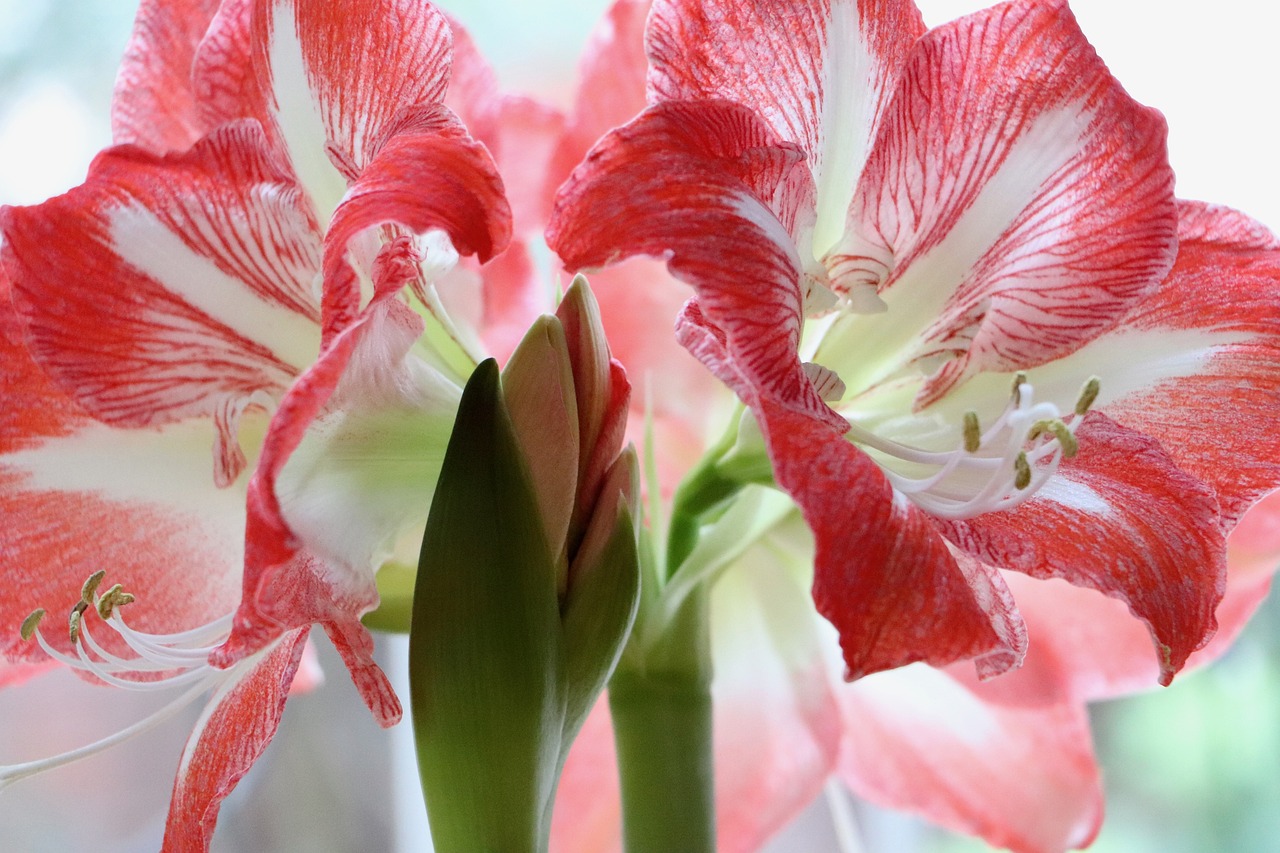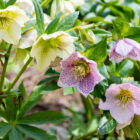
Amaryllis between history and myth
Amaryllis – origin of the ‘shining’ flower

Amaryllis is a bulbous plant belonging to the Amaryllidaceae family. Its origin is South Africa, with its best known species being the amaryllis belladonna, also commonly known as just amaryllis. It is important to not confuse Amaryllis with the genus Hippeastrum, as the latter originates from South America and generally has much larger flowers. The name Amaryllis carries a meaning of freedom, deriving from a Greek term which means ‘to shine’.
Amaryllis meaning, between myth and reality
The first evidence of Amaryllis lays in Greek myth, but later even Virgil in his Eclogues talks about it. In fact, he tells the story of the beautiful Amaryllis, a woodland nymph famous for her beauty and her non reciprocal love for Alteus. This association, among other things, helped strengthen the image of the Amaryllis as a symbol of beauty and love. At the same time, it is a symbol of strength. Indeed, this flower would almost seem to recall the strength and determination of Amaryllis in winning the love of Alteo.
Characteristics of the Amaryllis
Amaryllis flower, a perennial bulbous plant. Its flowers have the shape of a funnel and it blooms from August to October for up to 7 weeks. The bulb begins to produce stems in August, especially in particularly dry soil. The stems can reach heights of up to 70 cm. The bulbs are of considerable size and typically produce two stems. Each stem is capable of producing several flowers. Generally, the plant bears 6 to 10 white flowers with darker veins, but variations depending on the species result in a full range of colors from white to yellow to red.
Is this a poisonous flower?
Are amaryllis indoor or outdoor plants?
Even beginner gardeners consider Amaryllis a suitable plant because it is very easy to grow. Amaryllis does best as an indoor plant; you should place the potted amaryllis in a bright spot away from draughts and direct sunlight. Amaryllis also grows well in rather small pots (in fact, it prefers to be narrow!); the important thing is that the pot is perforated and accompanied by a saucer to aid drainage. Water stagnation could damage the bulb; it requires soil rich in nutrients but also with good drainage and little water.
How do you grow an amaryllis from a bulb?

The vegetative cycle of the Amaryllis plant starts in autumn, when new leaves begin to appear immediately after flowering. The leaves continue to grow throughout the winter. They then wither away around May-June. For this reason, in order to achieve the best results, it is best to plant the amaryllis bulbs towards the end of spring, between May and June. Before the shoots emerge, water requirements are limited. However, as soon as the stems start to grow, an increase in irrigation becomes essential. It is a plant that reacts well to light, but its exposure should be limited as its flowers prefer cooler places. As far as pruning is concerned, it should only be limited to removing dry leaves and withered flowers at flowering time.
What to do with the Amaryllis bulbs after flowering?
Once flowering is over, it is therefore advisable to cut the stems at the level of the new foliage, allowing the foliage to strengthen the bulb in the dormant months (spring-summer). If the frost period is over, you can also consider moving the plant outside, e.g. to a shady spot on the balcony or in the garden. In this phase, the bulb creates new flowers but needs water and nutrients, but also sufficient, but not excessive, daylight.
Amaryllis care and fertilisation
 However, since Amaryllis needs to replenish its nutrient balance after the strenuous flowering period, use a liquid fertiliser for flowering plants about every fortnight from March to May. Doctor Bioges recommends Vivacity, a fertiliser for bulbous plants in a fast-absorbing liquid formulation. It is a product that contains all nutrients in optimal ratios and doses for rapid root absorption. At the same time, it even promotes key biological processes, intensifies flowering by lengthening its duration and gives flowers vibrant, intense colours.
However, since Amaryllis needs to replenish its nutrient balance after the strenuous flowering period, use a liquid fertiliser for flowering plants about every fortnight from March to May. Doctor Bioges recommends Vivacity, a fertiliser for bulbous plants in a fast-absorbing liquid formulation. It is a product that contains all nutrients in optimal ratios and doses for rapid root absorption. At the same time, it even promotes key biological processes, intensifies flowering by lengthening its duration and gives flowers vibrant, intense colours.
In conclusion…
Caring for amaryllis is by no means difficult, and there are some fairly common mistakes that you should best avoid for the well-being of the plant. For example, avoid overwatering the amaryllis, as too much moisture can cause the bulb to rot. It is also important not to use too large a pot, as amaryllis develops best in a container that is slightly larger than the bulb. Finally, it would be a good idea never to throw away the amaryllis once it has finished flowering. Remember that if you give this plant the right care, it will come back to flower year after year. We hope that we have succeeded in convincing you, and that you will give this plant the opportunity to shine and thrive at home, whether in your flat, in your garden, or on your balcony.
If you have questions, the Bioges team is always ready to assist you. You can contact us directly on our social networks or by sending an e-mail to info@biogesandco.com



